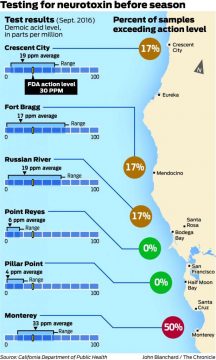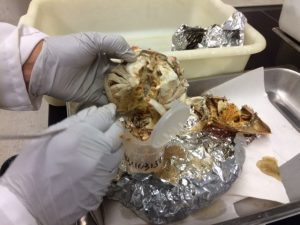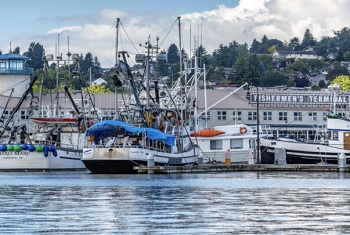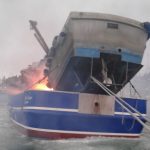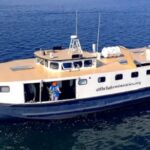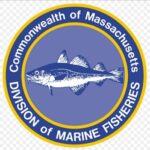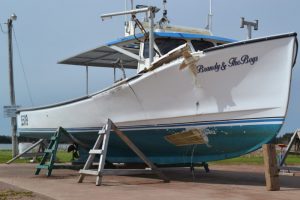Tag Archives: domoic acid
ODFW and ODA close crabbing along large part of Oregon coast
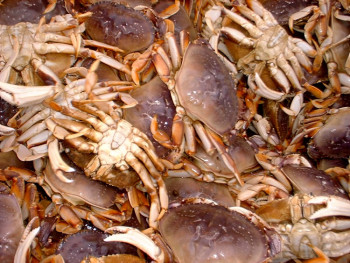 The Oregon Department of Agriculture and ODFW announced Friday recreational and commercial bay crabbing from Tillamook Head to the California border is closed due to elevated levels of domoic acid. Officials say they found elevated domoic acid levels in the viscera of Dungeness crab collected between Cascade Head and Cape Falcon. This triggered a biotoxin closure. The closure includes harvesting Dungeness and red rock crab in bays and estuaries, off docks, piers, jetties, and the ocean. The coastal areas outside of where the domoic acid was found are closed out of precaution while officials process more samples. The additional sample results could allow ODFW and the Department of Agriculture to reopen some areas and open the ocean crab fisheries, which are scheduled to open December 1. Read the rest here 17:36
The Oregon Department of Agriculture and ODFW announced Friday recreational and commercial bay crabbing from Tillamook Head to the California border is closed due to elevated levels of domoic acid. Officials say they found elevated domoic acid levels in the viscera of Dungeness crab collected between Cascade Head and Cape Falcon. This triggered a biotoxin closure. The closure includes harvesting Dungeness and red rock crab in bays and estuaries, off docks, piers, jetties, and the ocean. The coastal areas outside of where the domoic acid was found are closed out of precaution while officials process more samples. The additional sample results could allow ODFW and the Department of Agriculture to reopen some areas and open the ocean crab fisheries, which are scheduled to open December 1. Read the rest here 17:36
Down East area reopened to shellfish harvesting as level of biotoxin fades
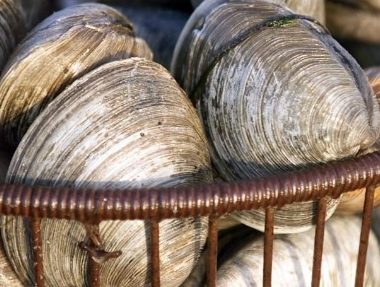 The Maine Department of Marine Resources has given the all-clear for Down East shellfish harvesters, more than a month after closing the region to harvesting because of an unusual bloom of toxic algae. On Monday, the DMR announced it was reopening harvesting areas between Penobscot Bay and Machiasport for shellfish, including softshell clams and mussels. Areas farther east, between Machiasport and Calais, were reopened to harvesting Oct. 25. The entire Down East coast from east Penobscot Bay to the Canadian border was closed at the end of September. The closure was triggered after shellfish samples from Jonesport, Corea and Roque Bluffs tested positive for elevated levels of domoic acid, a biotoxin that can cause amnesic shellfish poisoning and lead to illness, brain damage and possibly death. Read the story here 09:59
The Maine Department of Marine Resources has given the all-clear for Down East shellfish harvesters, more than a month after closing the region to harvesting because of an unusual bloom of toxic algae. On Monday, the DMR announced it was reopening harvesting areas between Penobscot Bay and Machiasport for shellfish, including softshell clams and mussels. Areas farther east, between Machiasport and Calais, were reopened to harvesting Oct. 25. The entire Down East coast from east Penobscot Bay to the Canadian border was closed at the end of September. The closure was triggered after shellfish samples from Jonesport, Corea and Roque Bluffs tested positive for elevated levels of domoic acid, a biotoxin that can cause amnesic shellfish poisoning and lead to illness, brain damage and possibly death. Read the story here 09:59
Shellfish harvested from RI waters test negative for toxins
 While Rhode Island’s shellfishing industry is still on hold as toxin levels in area waters remain high, the Rhode Island Department of Environmental Management reported Friday that shellfish meat tested negative for toxic phytoplankton. “Every time we have found toxicity in the water column, we’ve never found it in the shellfish,” Angelo Liberti of the Rhode Island Department of Environmental Management told NBC 10 News. A harmful algae bloom forced a precautionary closure of Narragansett Bay, Mt. Hope Bay, Kickemuit River, Sakonnet River, as well as their tributaries, on Oct. 6 and Oct. 7. Authorities hope that the shellfishing industry will be fully operational again soon. That’s good news for shellfishermen, who have been out of work since the closure was enacted. If the remaining shellfish samples come back negative, they could be back in business as soon as next week. Read the story here 15:05
While Rhode Island’s shellfishing industry is still on hold as toxin levels in area waters remain high, the Rhode Island Department of Environmental Management reported Friday that shellfish meat tested negative for toxic phytoplankton. “Every time we have found toxicity in the water column, we’ve never found it in the shellfish,” Angelo Liberti of the Rhode Island Department of Environmental Management told NBC 10 News. A harmful algae bloom forced a precautionary closure of Narragansett Bay, Mt. Hope Bay, Kickemuit River, Sakonnet River, as well as their tributaries, on Oct. 6 and Oct. 7. Authorities hope that the shellfishing industry will be fully operational again soon. That’s good news for shellfishermen, who have been out of work since the closure was enacted. If the remaining shellfish samples come back negative, they could be back in business as soon as next week. Read the story here 15:05
Declining biotoxin levels – Some Down East shellfishing areas reopened
On Thursday, the Department of Marine Resources re-opened some of the coastline between Calais and Cutler for the harvest of clams, mussels and carnivorous snails, and said clamming will be allowed on a portion of the coast between Isle Au Haut to Winter Harbor. Shellfish harvesting on much of the Down East coast remains restricted because of an algae bloom that produces a toxin that can cause amnesic shellfish poisoning, or ASP, in humans. It is unclear if the limited reopening Thursday means the bloom is clearing up or if harvesting bans will be removed in other areas soon. “We can’t speculate, but we continue to test shellfish and phytoplankton along the coast, both inside and outside the impacted areas, and will re-open areas as soon as test results allow,” said Jeff Nichols, a spokesman for the department of Marine Resources. Lifting the emergency restrictions was a relief to clammers who have been kept off the flats for the last two weeks. Read the story here 08:32
of the coastline between Calais and Cutler for the harvest of clams, mussels and carnivorous snails, and said clamming will be allowed on a portion of the coast between Isle Au Haut to Winter Harbor. Shellfish harvesting on much of the Down East coast remains restricted because of an algae bloom that produces a toxin that can cause amnesic shellfish poisoning, or ASP, in humans. It is unclear if the limited reopening Thursday means the bloom is clearing up or if harvesting bans will be removed in other areas soon. “We can’t speculate, but we continue to test shellfish and phytoplankton along the coast, both inside and outside the impacted areas, and will re-open areas as soon as test results allow,” said Jeff Nichols, a spokesman for the department of Marine Resources. Lifting the emergency restrictions was a relief to clammers who have been kept off the flats for the last two weeks. Read the story here 08:32
First in Maine, Now in Massachusetts. Toxic algae outbreak halts shellfishing in Buzzards Bay, Mount Hope Bay
 The state’s Division of Marine Fisheries has banned shellfishing in the west side of Buzzards Bay and in Mount Hope Bay because of a breakout of toxic algae late last week. The ban affects all SouthCoast towns and cities. “As a result of the closure, digging, harvesting, collecting and/or attempting to dig, harvest or collect shellfish, and the possession of shellfish, is prohibited in Bourne, Dartmouth, Fairhaven, Falmouth, Gosnold, Marion, Mattapoisett, New Bedford, Swansea and Westport,” the state said in a press release. The trouble concerns a toxic kind of phytoplankton termed Pseudo-Nitzschia. This algae can produce domoic acid, a biotoxin that concentrates in filter-feeding shellfish. Read the story here 08:37
The state’s Division of Marine Fisheries has banned shellfishing in the west side of Buzzards Bay and in Mount Hope Bay because of a breakout of toxic algae late last week. The ban affects all SouthCoast towns and cities. “As a result of the closure, digging, harvesting, collecting and/or attempting to dig, harvest or collect shellfish, and the possession of shellfish, is prohibited in Bourne, Dartmouth, Fairhaven, Falmouth, Gosnold, Marion, Mattapoisett, New Bedford, Swansea and Westport,” the state said in a press release. The trouble concerns a toxic kind of phytoplankton termed Pseudo-Nitzschia. This algae can produce domoic acid, a biotoxin that concentrates in filter-feeding shellfish. Read the story here 08:37
Toxic algae bloom closes Downeast Maine shellfish industry
 Last week, the Department of Marine Resources issued a recall of mussels, clams and quahogs caught in Downeast Maine after samples tested positive for domoic acid, a biotoxin that causes illness, memory loss, brain damage and possibly death in humans. At the same time, the state banned harvesting for mussels, clams, oysters and carnivorous snails on parts of a wide swath of coastline from Deer Isle to the Canadian border. “A closure for this toxin in Eastern Maine is unprecedented, that is not anything anyone has ever seen,” said Darcie Couture, a Brunswick marine scientist and former head of the state’s marine biotoxin program. “No one on this coast is that experienced with a domoic acid event,” Couture said. “I don’t think it is sinking in how serious this is.” Read the story here 23:07
Last week, the Department of Marine Resources issued a recall of mussels, clams and quahogs caught in Downeast Maine after samples tested positive for domoic acid, a biotoxin that causes illness, memory loss, brain damage and possibly death in humans. At the same time, the state banned harvesting for mussels, clams, oysters and carnivorous snails on parts of a wide swath of coastline from Deer Isle to the Canadian border. “A closure for this toxin in Eastern Maine is unprecedented, that is not anything anyone has ever seen,” said Darcie Couture, a Brunswick marine scientist and former head of the state’s marine biotoxin program. “No one on this coast is that experienced with a domoic acid event,” Couture said. “I don’t think it is sinking in how serious this is.” Read the story here 23:07
Dungeness crab get qualified thumbs-up in tests for domoic acid
The fate of the Dungeness crab season will hang on the test results coming out of an East Bay lab. With the beginning of the season approaching in November, the California Department of Public Health has begun safety tests on Dungeness crab a few weeks earlier than usual. Dungeness crab samples collected from Crescent City (Del Norte County) all the way down to Monterey are filing in to the Food and Drug Laboratory Branch in Richmond, where they are tested for domoic acid, the naturally occurring but potentially devastating neurotoxin that wreaked havoc on last year’s season. So far, results are normal for this time of year, said Patrick Kennelly, chief of food safety at the state health department — even though crabs from four of six regions are testing positive for domoic acid. But you can be sure that crabbers, as well as officials from the departments of public health and fish and wildlife, are watching the results closely, with Dungeness crab season due to start Nov. 5 for recreational fishers and Nov. 15 for commercial crabbers. Read the story here 09:42
Next Dungeness crab season remains murky while fishermen are optimistic
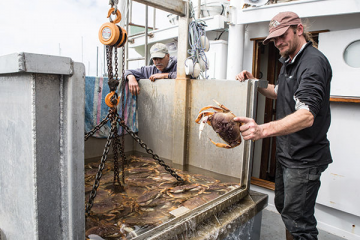 After an algae-produced neurotoxin significantly curtailed the last Dungeness crab season, commercial anglers are glad to hear that the upcoming season won’t be spoiled — at least not to the same extent. “We’re not going to see closures of the entire state,” said Raphael Kudela, an ocean sciences professor at the University of California, Santa Cruz. Ben Platt, a crab fishermen who docks his boat at Pillar Point Harbor, said in email to the Review that he and others were feeling optimistic that the domoic acid would not interfere with the start of this year’s season. “We are all hopeful that our season will start as normal on Nov. 15 in Central California based on the overall cooler water temperatures off our coast,” he wrote. “We were able to have a limited season last spring and get people used to buying and eating crab again. “Many of our fishing families were able to get back to work and start paying their bills again,” he said. Read the story here 19:35
After an algae-produced neurotoxin significantly curtailed the last Dungeness crab season, commercial anglers are glad to hear that the upcoming season won’t be spoiled — at least not to the same extent. “We’re not going to see closures of the entire state,” said Raphael Kudela, an ocean sciences professor at the University of California, Santa Cruz. Ben Platt, a crab fishermen who docks his boat at Pillar Point Harbor, said in email to the Review that he and others were feeling optimistic that the domoic acid would not interfere with the start of this year’s season. “We are all hopeful that our season will start as normal on Nov. 15 in Central California based on the overall cooler water temperatures off our coast,” he wrote. “We were able to have a limited season last spring and get people used to buying and eating crab again. “Many of our fishing families were able to get back to work and start paying their bills again,” he said. Read the story here 19:35
Trinidad crab tests to determine commercial opener
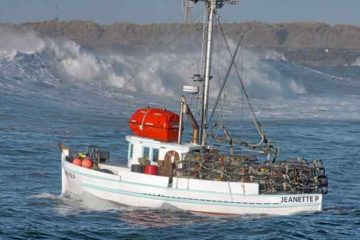 The long-awaited opener of the commercial crab season on the North Coast now hinges on six crabs collected just south of Trinidad Head. If the crabs don’t show high levels of a neurotoxin, which has delayed the state’s crab season since Dec. 1, the commercial season could start as soon as May 5, according to Department of Fish and Wildlife senior environmental scientist Pete Kalvass. “That’s holding everything up,” Kalvass said of the Trinidad crab. “… If those six crabs show up clean, we could declare the entire area clear and then open up sport fishing up in that region and commercial (fishing) a week later.” Meanwhile, state officials are gearing up to hear an update on Thursday regarding Gov. Jerry Brown’s request for federal fisheries disaster relief funds and how the state is preparing for future incidents. Read the rest here 07:46
The long-awaited opener of the commercial crab season on the North Coast now hinges on six crabs collected just south of Trinidad Head. If the crabs don’t show high levels of a neurotoxin, which has delayed the state’s crab season since Dec. 1, the commercial season could start as soon as May 5, according to Department of Fish and Wildlife senior environmental scientist Pete Kalvass. “That’s holding everything up,” Kalvass said of the Trinidad crab. “… If those six crabs show up clean, we could declare the entire area clear and then open up sport fishing up in that region and commercial (fishing) a week later.” Meanwhile, state officials are gearing up to hear an update on Thursday regarding Gov. Jerry Brown’s request for federal fisheries disaster relief funds and how the state is preparing for future incidents. Read the rest here 07:46
Bay Area crab fishermen prepare for Saturday’s long overdue season opener
 The crab pots were piled eight high along the Santa Cruz Small Craft Harbor dock Wednesday afternoon as Dungeness crab fisherman loaded boats in preparation for Saturday’s long overdue commercial crab fishery opener. After a five-month delay due to the presence of domoic acid, a potentially deadly neurotoxin that had been found in crabs, state health officials determined the crabs “no longer pose a significant human health risk.” Some have decided it’s not worth the effort this late in the season. As others loaded crab pots onto boats in the Santa Cruz Harbor, longtime crab fisherman Stan Bruno of Santa Cruz was packing up his gear to store it for the summer. Read the rest here 08:26
The crab pots were piled eight high along the Santa Cruz Small Craft Harbor dock Wednesday afternoon as Dungeness crab fisherman loaded boats in preparation for Saturday’s long overdue commercial crab fishery opener. After a five-month delay due to the presence of domoic acid, a potentially deadly neurotoxin that had been found in crabs, state health officials determined the crabs “no longer pose a significant human health risk.” Some have decided it’s not worth the effort this late in the season. As others loaded crab pots onto boats in the Santa Cruz Harbor, longtime crab fisherman Stan Bruno of Santa Cruz was packing up his gear to store it for the summer. Read the rest here 08:26
California Commercial crab season to begin as domoic acid levels drop
 The California Department of Fish and Wildlife lifted prohibitions against fishing everywhere south of the Sonoma-Mendocino county line after state health officials determined the crabs “no longer pose a significant human health risk.” It means the coast is essentially clear of , the potentially deadly neurotoxin that has been found in crabs. Health officials said “low or undetectable levels” of the toxin were found throughout the range, including San Francisco, Half Moon Bay and Monterey. “We’re very happy to be going back to work. We hope everybody gets their big pot of boiling salt water going,” said Larry Collins, president of the Crab Boat Owners Association. Read the rest here 07:48
The California Department of Fish and Wildlife lifted prohibitions against fishing everywhere south of the Sonoma-Mendocino county line after state health officials determined the crabs “no longer pose a significant human health risk.” It means the coast is essentially clear of , the potentially deadly neurotoxin that has been found in crabs. Health officials said “low or undetectable levels” of the toxin were found throughout the range, including San Francisco, Half Moon Bay and Monterey. “We’re very happy to be going back to work. We hope everybody gets their big pot of boiling salt water going,” said Larry Collins, president of the Crab Boat Owners Association. Read the rest here 07:48
Oregon – Crabs safe after toxin scare; prices fall
 A toxic algae bloom that shut down the West Coast’s entire shellfish industry may actually be good news for crab lovers, according to some crabbers. The price for crabs has plummeted because people are hesitant to buy them after the highly publicized toxin scare, reported The Oregonian. But the creatures are safe to eat. “The consumer is going to get a far superior product,” said John Corbin, head of the Oregon Dungeness Crab Commission. “They’re going to get a great, stuffed-full crab right now.” Read the article here 18:44
A toxic algae bloom that shut down the West Coast’s entire shellfish industry may actually be good news for crab lovers, according to some crabbers. The price for crabs has plummeted because people are hesitant to buy them after the highly publicized toxin scare, reported The Oregonian. But the creatures are safe to eat. “The consumer is going to get a far superior product,” said John Corbin, head of the Oregon Dungeness Crab Commission. “They’re going to get a great, stuffed-full crab right now.” Read the article here 18:44
Southern California crab fishermen given all-clear in toxin scare
 In another sign that fresh crab meat soon may end up on Sacramento dinner plates, state officials announced Thursday that crabs caught along the Southern California coast are no longer so infused with toxins that they’re unsafe to eat. But the Northern California crab fishery – where most of the region gets its fresh crab – remains closed because of a massive off the coast. On Thursday, state health and wildlife officials announced that meat from crab caught south of the Piedras Blancas Light Station in San Luis Obispo County “no longer poses a, Read the article here 20:40
In another sign that fresh crab meat soon may end up on Sacramento dinner plates, state officials announced Thursday that crabs caught along the Southern California coast are no longer so infused with toxins that they’re unsafe to eat. But the Northern California crab fishery – where most of the region gets its fresh crab – remains closed because of a massive off the coast. On Thursday, state health and wildlife officials announced that meat from crab caught south of the Piedras Blancas Light Station in San Luis Obispo County “no longer poses a, Read the article here 20:40
Lack of crab ripples through Pillar Point Harbor
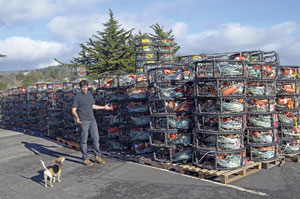 Instead of the hustle and bustle enlivening the docks at Pillar Point Harbor this time of year, little action is afoot with hundreds of crab pots sitting idle as fishermen ponder how to supplement their income while the popular season remains closed. “I told my crew: ‘Guys, if you can find some other work, pick it up. Because it’ll probably be at least a month before we go fishing.’ If I can find other work, I’ll try it too,” said Porter McHenry, a local captain and president of the Half Moon Bay Seafood Marketing Association. “You try and stay in high spirits,,, Read the article here 08:59
Instead of the hustle and bustle enlivening the docks at Pillar Point Harbor this time of year, little action is afoot with hundreds of crab pots sitting idle as fishermen ponder how to supplement their income while the popular season remains closed. “I told my crew: ‘Guys, if you can find some other work, pick it up. Because it’ll probably be at least a month before we go fishing.’ If I can find other work, I’ll try it too,” said Porter McHenry, a local captain and president of the Half Moon Bay Seafood Marketing Association. “You try and stay in high spirits,,, Read the article here 08:59
Dungeness crabbers worry sensationalized domoic acid headlines will scare away demand
 As Dungeness crabbers in California, Oregon and Washington continue to wait for domoic acid to drop to safe levels so they can begin the already-delayed crabbing season, some fear that falling consumer confidence might impact this season’s prices. According to an executive at a wholesale company who wished to remain anonymous, (source A), despite having “plenty of inventory” to hold them over as the company waits for the fishery to open, “bad press has lowered demand…irresponsible reporting of media on domoic acid has damaged our markets”. Read the article here 14:06
As Dungeness crabbers in California, Oregon and Washington continue to wait for domoic acid to drop to safe levels so they can begin the already-delayed crabbing season, some fear that falling consumer confidence might impact this season’s prices. According to an executive at a wholesale company who wished to remain anonymous, (source A), despite having “plenty of inventory” to hold them over as the company waits for the fishery to open, “bad press has lowered demand…irresponsible reporting of media on domoic acid has damaged our markets”. Read the article here 14:06
California sea lions suffering from brain damage caused by algal blooms

Getting Close! California’s Dungeness crab season still not ready to begin
 “I don’t know when we will reopen,” California Department of Fish and Wildlife Director Charlton Bonham told a legislative committee in Santa Rosa. “You deserve honesty.” Tests by the California Department of Public Health show levels of domoic acid, a biotoxin that has tainted this year’s crabs, have declined to safe levels from San Francisco to Santa Barbara. But it will take another round of clean tests for Fish and Wildlife to consider opening the commercial crab season in those areas, and levels of domoic acid remain high in northern counties from Sonoma to the Oregon border. Read the article here 07:43
“I don’t know when we will reopen,” California Department of Fish and Wildlife Director Charlton Bonham told a legislative committee in Santa Rosa. “You deserve honesty.” Tests by the California Department of Public Health show levels of domoic acid, a biotoxin that has tainted this year’s crabs, have declined to safe levels from San Francisco to Santa Barbara. But it will take another round of clean tests for Fish and Wildlife to consider opening the commercial crab season in those areas, and levels of domoic acid remain high in northern counties from Sonoma to the Oregon border. Read the article here 07:43
Tests show progress toward lifting of Dungeness closure
 Sport-crabbers could be back on South Coast bays in less than two weeks, and the state’s commercial crabbing fleet is eyeing a Dec. 15 opener after new tests on Dungeness crab show that levels of domoic acid that closed the fisheries are now falling, authorities said. But all eyes are on Monday’s results of Dungeness samples taken last weekend for Brookings and Port Orford to see whether they mirror crab in Coos and Winchester bays as dropping beneath health-alert levels or whether they join Northern California ports still seeing potentially unhealthy levels. Read the article here 07:11
Sport-crabbers could be back on South Coast bays in less than two weeks, and the state’s commercial crabbing fleet is eyeing a Dec. 15 opener after new tests on Dungeness crab show that levels of domoic acid that closed the fisheries are now falling, authorities said. But all eyes are on Monday’s results of Dungeness samples taken last weekend for Brookings and Port Orford to see whether they mirror crab in Coos and Winchester bays as dropping beneath health-alert levels or whether they join Northern California ports still seeing potentially unhealthy levels. Read the article here 07:11
Toxin Levels Dropping in California Crabs
 Seafood lovers and California’s commercial fishermen received good news Thursday as tests revealed dropping levels of the dangerous neurotoxin that has temporarily delayed the state’s crab season. Dungeness crab caught and surveyed from the San Francisco Bay, Half Moon Bay and Morro Bay were found to have safe levels for domoic acid, according to test results from the California Department of Public Health. Read the article here 15:32
Seafood lovers and California’s commercial fishermen received good news Thursday as tests revealed dropping levels of the dangerous neurotoxin that has temporarily delayed the state’s crab season. Dungeness crab caught and surveyed from the San Francisco Bay, Half Moon Bay and Morro Bay were found to have safe levels for domoic acid, according to test results from the California Department of Public Health. Read the article here 15:32
Oregon and Washington delay crab season because of toxin
 Oregon on Friday delayed the Dec. 1 start along its entire coast, after testing in recent weeks showed higher toxin levels in the southern half of the state. Oregon Department of Fish and Wildlife officials said delay of the season will allow completion of additional testing to make sure toxin levels are safe. And in Washington, officials on Friday also said they’re delaying the season along parts of the coast where it starts on Dec. 1. Read the article here 11:13
Oregon on Friday delayed the Dec. 1 start along its entire coast, after testing in recent weeks showed higher toxin levels in the southern half of the state. Oregon Department of Fish and Wildlife officials said delay of the season will allow completion of additional testing to make sure toxin levels are safe. And in Washington, officials on Friday also said they’re delaying the season along parts of the coast where it starts on Dec. 1. Read the article here 11:13
Dungeness crab season delays hit Santa Cruz fishermen hard
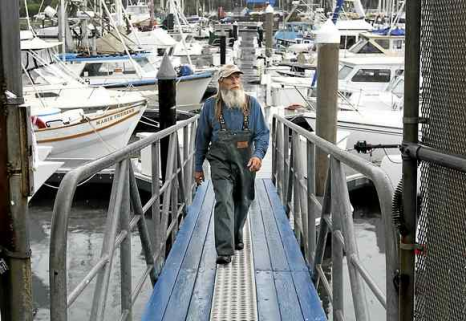 Crab fishermen were busy scraping last year’s crust of debris from marker buoys, replacing ID tags on old crab pots and getting new pots ready last week in preparation for the start of the commercial Dungeness crab season, despite uncertainty over when it will begin. “We have to get ready as if nothing’s changed,” said fisherman Will Collins. “And just stand by until it’s ready to go.” “I don’t see it opening till the first of the year,” said Stan Bruno, commercial fisherman and captain of The Grinder, based in Santa Cruz. “The levels are that high.” Read the rest here 11:56
Crab fishermen were busy scraping last year’s crust of debris from marker buoys, replacing ID tags on old crab pots and getting new pots ready last week in preparation for the start of the commercial Dungeness crab season, despite uncertainty over when it will begin. “We have to get ready as if nothing’s changed,” said fisherman Will Collins. “And just stand by until it’s ready to go.” “I don’t see it opening till the first of the year,” said Stan Bruno, commercial fisherman and captain of The Grinder, based in Santa Cruz. “The levels are that high.” Read the rest here 11:56
Questions, answers about toxic West Coast crabs
 A poisonous substance linked to a massive algae bloom off the West Coast has prompted officials to halt recreational shellfishing from Washington to California and is blamed for sickening dozens of seabirds, seals, whales and other marine life. Below are questions and answers about the issue: Q: What is the problem? A: Domoic acid, a naturally occurring neurotoxin, has been found in high levels in a variety of shellfish, which in turn are eaten by predators up the food chain — including humans. Domoic acid poisoning can cause vomiting, seizures and, in severe cases, coma and death. Photo gallery, Read the rest here 14:00
A poisonous substance linked to a massive algae bloom off the West Coast has prompted officials to halt recreational shellfishing from Washington to California and is blamed for sickening dozens of seabirds, seals, whales and other marine life. Below are questions and answers about the issue: Q: What is the problem? A: Domoic acid, a naturally occurring neurotoxin, has been found in high levels in a variety of shellfish, which in turn are eaten by predators up the food chain — including humans. Domoic acid poisoning can cause vomiting, seizures and, in severe cases, coma and death. Photo gallery, Read the rest here 14:00
Algae Bloom Is Toxic For Washington Crabbers’ Bottom Lines
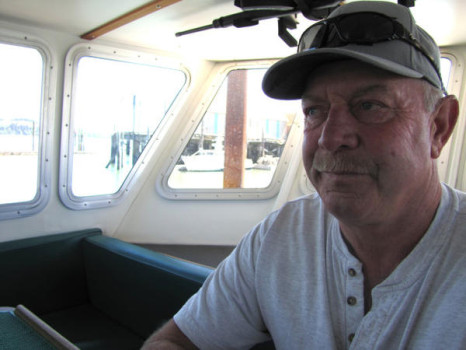 Tom Petersen’s 50-foot crab boat sits idly in the Port of Willapa Harbor, a tiny coastal inlet 40 or so miles north of the mouth of the Columbia River. On a normal early-summer day, Petersen would be selling Dungeness crab to canneries, big-city buyers and even fresh off the back of his boat to locals and tourists. And he’d be making good money doing it. With crab selling at up to $10 per pound, Petersen could be making thousands of dollars a day. But for the past few weeks, Petersen and all the other commercial crabbers who fish,,, Read the rest here 06:35
Tom Petersen’s 50-foot crab boat sits idly in the Port of Willapa Harbor, a tiny coastal inlet 40 or so miles north of the mouth of the Columbia River. On a normal early-summer day, Petersen would be selling Dungeness crab to canneries, big-city buyers and even fresh off the back of his boat to locals and tourists. And he’d be making good money doing it. With crab selling at up to $10 per pound, Petersen could be making thousands of dollars a day. But for the past few weeks, Petersen and all the other commercial crabbers who fish,,, Read the rest here 06:35
The most extensive and harmful toxic algal bloom ever recorded on the West Coast continues
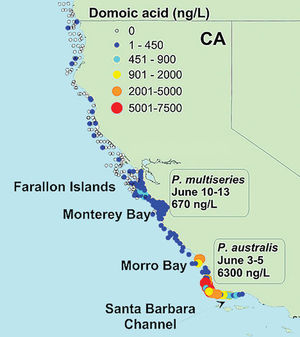 “Right now, I’m fishing out of Monterey,” said Porter McHenry, president of Half Moon Bay Seafood Marketing Association, and a local commercial fisherman. “I’m fishing for anchovies. The buyers are shipping them to big pens in Australia as tuna feed. (The anchovies) can’t go for human consumption.” For the most part, McHenry seemed largely unconcerned with the domoic acid levels along the Coastside, especially because the local fishing activity has naturally slowed for the summer months. “It’s not that bad. You just can’t eat the guts,” he said. Read the rest here 07:53
“Right now, I’m fishing out of Monterey,” said Porter McHenry, president of Half Moon Bay Seafood Marketing Association, and a local commercial fisherman. “I’m fishing for anchovies. The buyers are shipping them to big pens in Australia as tuna feed. (The anchovies) can’t go for human consumption.” For the most part, McHenry seemed largely unconcerned with the domoic acid levels along the Coastside, especially because the local fishing activity has naturally slowed for the summer months. “It’s not that bad. You just can’t eat the guts,” he said. Read the rest here 07:53






